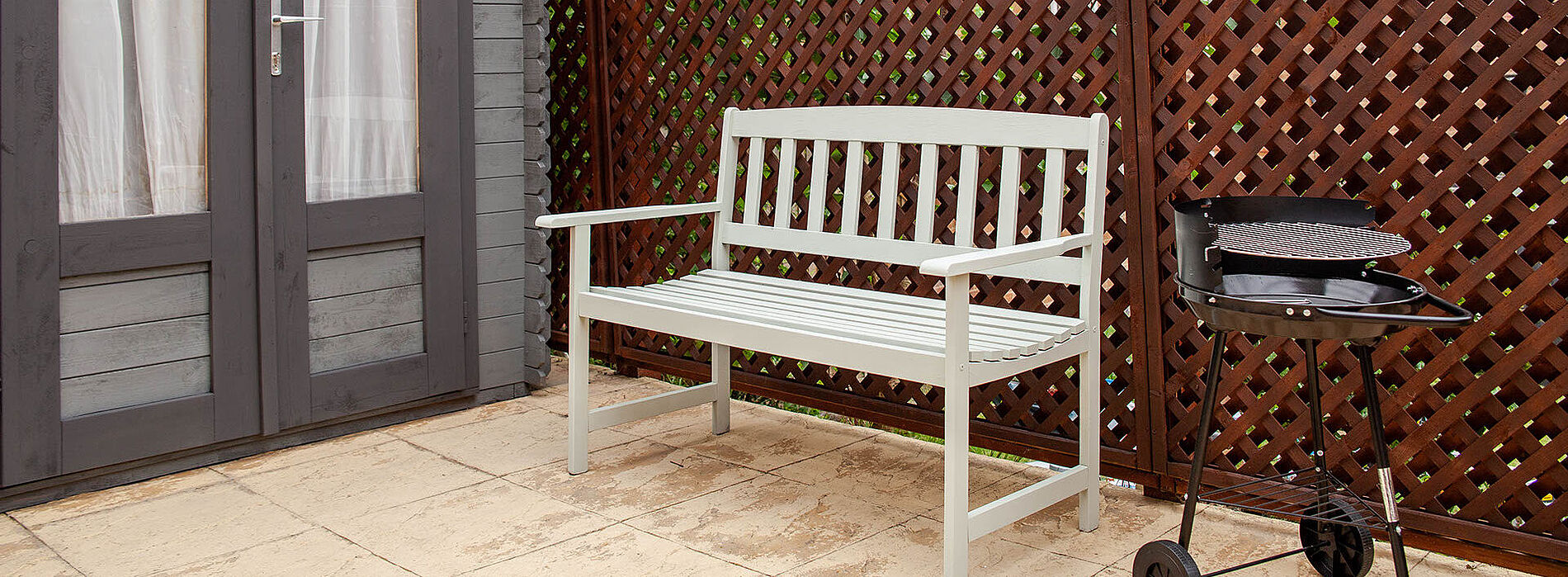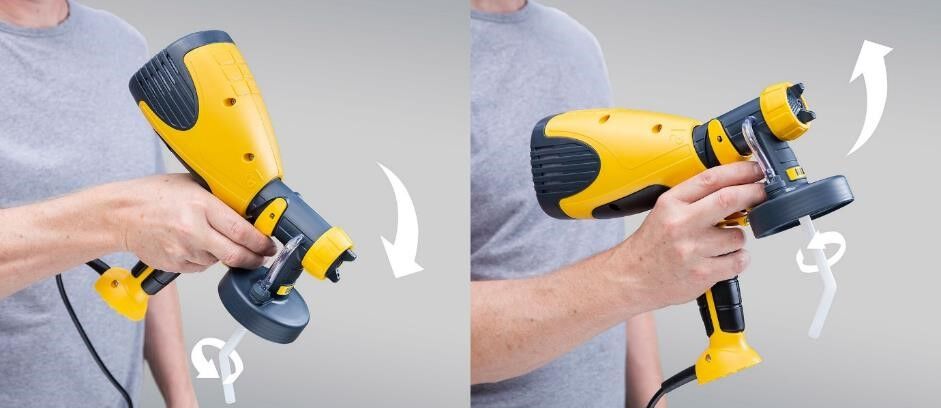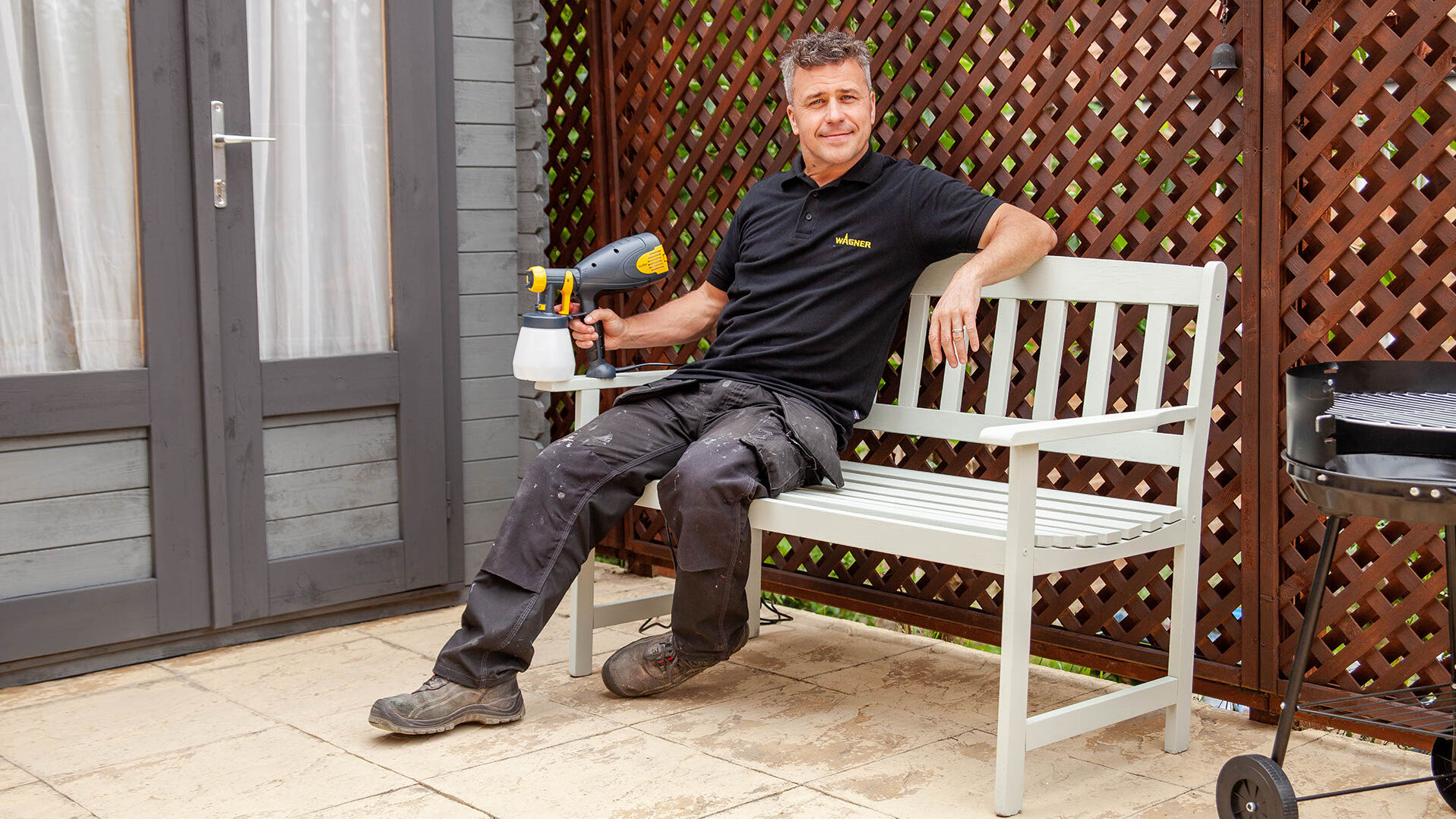Painting a garden bench
Nowhere can you enjoy a balmy summer night better than outside in your own garden, on the patio or a balcony. It is really enjoyable being on your own garden bench, which not only serves as a seating area, but is also nice to look at and visually enhances your home. However, weather influences and natural wear and tear cause garden furniture to age quickly. This can be remedied by a fresh coat of paint, which not only makes the bench look as good as new but can also give it a completely new look. Painting a garden bench with a brush or roller however is very time consuming. With a sprayer it is much faster and easier. In addition, when spraying, the paint gets deep into any cracks in the wooden bench and the paint is applied much more evenly, which means that it is less susceptible to weathering and your garden furniture remains protected for much longer. In these instructions we will show you what you need to consider in order to paint wooden garden furniture quickly and easily and to give it a new shine.








